Impact of Submodule Faults on the Performance of Modular Multilevel Converters
Abstract
1. Introduction
2. MMC Basic Operation
3. Internally Unbalanced MMC
- Because of a large number of passive components, parameter uncertainties due to manufacturing tolerances are inevitable and vary with several factors, including lifetimes.
- Although the SM capacitor voltage balancing controller or algorithm distributes the total dc voltage across each arm equally amongst the SM capacitors, the switching devices of each SM only withstand an SM capacitor voltage. However, asymmetry due to parameter tolerances or SM faults may cause unequal power contribution and voltage distribution between the MMC arms. Thus, the current and voltage stresses in the switching devices and heat distribution may differ between arms.
- Besides, capacitance and inductance differences between arms may actuate unbalanced fundamental frequency common-mode currents, which tend to leak into the dc side and appear as an undesirable current ripple in the dc current [23]. This is mainly because of the inherent power balancing mechanism of the MMC operation: in order to keep ac-dc power balance, different capacitor charge/discharge rate is induced, leading to fundamental frequency current difference between upper and lower arms.
4. MMC Internal Dynamics Controllers
4.1. Scheme-A
4.2. Scheme-B
- Prioritization of balanced capacitor voltage sums of the arms over the suppression of fundamental frequency current into the dc loops of three phase-legs;
- Prioritization of suppressing fundamental frequency currents in the dc loop over active balancing of the capacitor voltage sums of the upper and lower arms.
5. Simulations
- Scheme-A consists of common- and differential-mode capacitor voltage sum balancing controllers, which include a circulating current suppression controller.
- Scheme-B consists of common-mode capacitor voltage sum control in conjunction with the proposed direct fundamental circulating current suppression. Circulating current suppression controller is also included.
5.1. Impact of SM Faults on MMC Operation for Different Control Schemes
- When the SM fault occurs in the upper arm of leg-A at 0.4 s, the upper arm capacitor voltage sum decreases briefly and quickly recovers by sinking extra dc current, largely, due to the actions of differential-mode capacitor voltage sum or arm voltage balancing controllers of Scheme-A. During the transient period, the upper and lower arm voltages of the faulty phase exhibit brief disturbances, while the three-phase ac output currents remain unaffected, see Figure 8a–e.
- Following the SM fault, the common-mode capacitor voltage sums of three legs return to their pre-fault set-points, with the deviations emerged in both common- and differential-mode capacitor voltage sums of the three phase-legs (including the faulty phase-leg A) at 0.4 s that are quickly eliminated, see Figure 8f,g. These results demonstrate the importance of inter-arm vertical controllers implemented in Scheme-A.
- The plots in Figure 8h show that the healthy SM capacitor voltages of the faulty arm (upper arm of phase-leg A) increase due to a reduced number of active SMs that could contribute to the target capacitor voltage sums enforced by collective actions of common- and differential-mode controllers of Scheme-A. After bypass of the faulty SMs, their capacitor voltages do not exhibit any fluctuations associated with fundamental and remnant of 2nd harmonic currents as anticipated.
- MMC with the use of Scheme-B exhibits slightly different behavior from that with the control scheme A. The dc-link current displayed in Figure 9a exhibits smaller increase, and SM capacitor voltage sum of the faulty leg (an upper arm of phase-leg A) exhibits slightly small under-shoot and over-shoot compared to those with Scheme-A. The smaller increase in the dc current with control scheme B can be attributed to the absence of vertical controllers, which actively inject additional active powers and fundamental currents into the common-mode loops in order to enforce equalization of the arm capacitor voltage sums.
- The Scheme-B makes the MMC less sensitive to SM faults and remains capable of synthesizing the output ac voltages that the ac grid imposes at its ac terminals, with three-phase ac output currents remain unaffected, see Figure 9a,e.
- The common-mode capacitor voltage sums of the three phase-legs remain tightly controlled and less affected throughout as the control scheme B only enforces equal dc voltages across the MMC phase-legs, with the SM level capacitor voltage controller ensuring the imposed dc voltage across the phase-legs being equally distributed across the SM capacitors. These are achieved without paying any attention to the symmetry of upper and lower arm capacitor voltage sums, see Figure 9f,g.
- The healthy SMs have slightly lower capacitor voltages with Scheme-B than that of Scheme-A due to lower dc voltage across the faulty arm in post-fault condition, as demonstrated by the clear drift the differential-mode voltage displayed in Figure 9g. As in the previous case, the capacitor voltages of the faulty SMs become flat under the post-fault condition.
5.2. Parametric Studies of Asymmetric MMC Operation
- Figure 13a,b show that the highest fundamental frequency ripple in the dc current is observed when the upper and lower arms of the same phase-leg simultaneously present a higher mismatch in both SM capacitance and arm inductance, i.e., at extrema of (TC and TL) = (−10% and −10%) and (+10% and +10%). In contrast, the lowest fundamental current ripples are observed when TC and TL are (0 and 0), (+10% and −10%), and (−10% and +10%), entailing the polarities of SM capacitance, and arm inductance tolerances affect the magnitude of the fundamental current ripple on dc-side current. Notice that these observations are applied to both control schemes.
- Quantitatively, comparative parametric studies shown in Figure 13a,b confirm that the Scheme-B, which prioritizes suppression of fundamental frequency ripple in the common-mode currents, exhibits a lower residual ripple in the dc current compared to Scheme-A that prioritizes strict management of voltage stress within the converter over dc side waveform quality.
- Figure 14a,b display the variations of maximum attainable modulation index in faulty leg-A, with control schemes A and B. The active arm balancing control of scheme A helps to preserve the maximum achievable modulation index range during severe SM capacitance and arm inductance asymmetries. In contrast, with Scheme-B, the MMC modulation index range experiences small reduction as the levels of passive parameter mismatch increase. The worst-case reduction observed in the modulation index range is about 1.5%, which corresponds to a small reduction in MMC ac voltage synthesis and reactive power generation capabilities.
- The Scheme-A ensures a dc offset free in ac output voltage independent of the severity of MMC internal asymmetries at the expense of compromised dc current quality. While Scheme-B increases the risk of dc injection into the ac grid, particularly, when the arms with minimum capacitor voltage sums are no longer sufficient to synthesize the required ac voltage to exchange the desired active and reactive powers. These observations are in line with the discussions above.
6. Experimental Verifications
7. Conclusions
Author Contributions
Funding
Conflicts of Interest
Appendix A
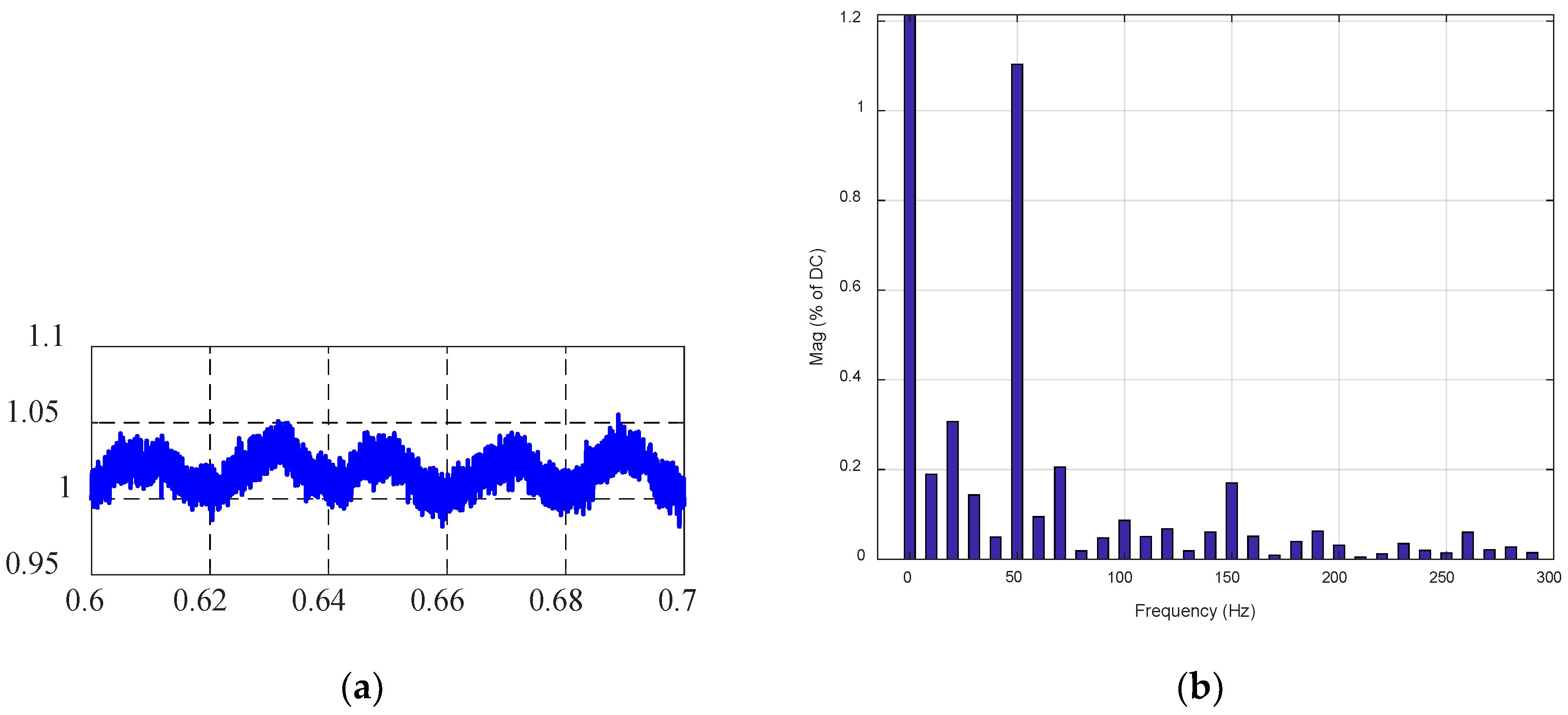
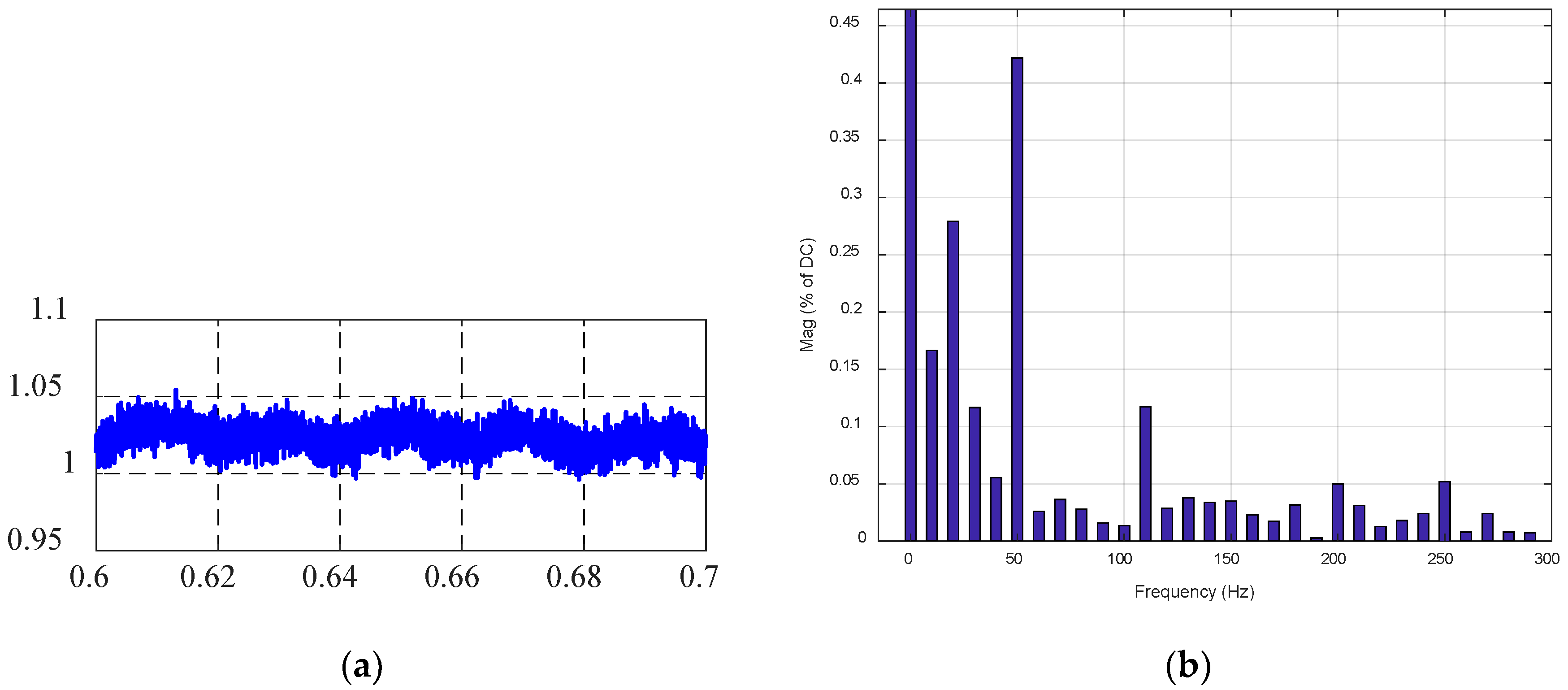
References
- Perez, M.A.; Bernet, S.; Rodriguez, J.; Kouro, S.; Lizana, R. Circuit topologies, modeling, control schemes, and applications of modular multilevel converters. IEEE Trans. Power Electron. 2015, 30, 4–17. [Google Scholar] [CrossRef]
- Wang, J.; Liang, J.; Wang, C.; Dong, X. Circulating current suppression for MMC-HVDC under unbalanced grid conditions. IEEE Trans. Ind. Appl. 2017, 53, 3250–3259. [Google Scholar] [CrossRef]
- Xiaoqian, L.; Qiang, S.; Jianguo, L.; Wenhua, L. Capacitor Voltage Balancing Control based on CPS-PWM of Modular Multilevel Converter. In Proceedings of the Energy Conversion Congress and Exposition (ECCE00), Phoenix, AZ, USA, 17–22 September 2011; pp. 4029–4034. [Google Scholar]
- Siemaszko, D. Fast sorting method for balancing capacitor voltages in modular multilevel converters. IEEE Trans. Power Electron. 2015, 30, 463–470. [Google Scholar] [CrossRef]
- Yang, W.; Song, Q.; Liu, W. Decoupled Control of Modular Multilevel Converter Based on Intermediate. IEEE Trans. Ind. Electron. 2016, 63, 4695–4706. [Google Scholar] [CrossRef]
- Adam, G.P.; Ahmed, K.H.; Finney, S.J.; Williams, B.W. AC fault ride-through capability of a VSC-HVDC transmission systems. In Proceedings of the 2010 IEEE Energy Conversion Congress and Exposition, Atlanta, GA, USA, 12–16 September 2010; pp. 3739–3745. [Google Scholar]
- Sasongko, F.; Sekiguchi, K.; Oguma, K.; Hagiwara, M.; Akagi, H. Theory and Experiment on an Optimal Carrier Frequency of a Modular Multilevel Cascade Converter with Phase-Shifted PWM. IEEE Trans. Power Electron. 2016, 31, 3456–3471. [Google Scholar] [CrossRef]
- Fan, S.; Zhang, K.; Xiong, J.; Xue, Y. An Improved Control System for Modular Multilevel Converters with New Modulation Strategy and Voltage Balancing Control. IEEE Trans. Power Electron. 2014, 30, 358371. [Google Scholar]
- Mehrabadi, N.R.; Burgos, R.; Boroyevich, D.; Roy, C. Modeling and design of the modular multilevel converter with parametric and model-form uncertainty quantification. In Proceedings of the 2017 IEEE Energy Conversion Congress and Exposition (ECCE), Cincinnati, OH, USA, 1–5 October 2017; pp. 1513–1520. [Google Scholar]
- Dekka, A.; Wu, B.; Lizana, R.; Zargari, N.R. A comparison of voltage balancing versus energy balancing approach for modular multilevel converters. In Proceedings of the IECON Proceedings (Industrial Electronics Conference), Florence, Italy, 24–27 October 2016; pp. 3117–3122. [Google Scholar]
- Zeng, R.; Xu, L.; Yao, L.; Finney, S.J. Analysis and Control of Modular Multilevel Converters under Unbalanced Conditions. IEEE Trans. Ind. Electron. 2016, 63, 71–81. [Google Scholar] [CrossRef]
- Zhang, F.; Zhao, C.; Xu, J. New control strategy of decoupling the AC/DC voltage offset for modular multilevel converter. IET Gener. Transm. Distrib. Spec. 2016, 10, 1382–1392. [Google Scholar] [CrossRef]
- Ghazanfari, A.; Mohamed, Y.A.R.I. A Resilient Framework for Fault-Tolerant Operation of Modular Multilevel Converters. IEEE Trans. Ind. Electron. 2016, 63, 2669–2678. [Google Scholar] [CrossRef]
- Deng, F.; Chen, Z.; Khan, M.R.; Zhu, R. Fault detection and localization method for modular multilevel converters. IEEE Trans. Power Electron. 2015, 30, 2721–2732. [Google Scholar] [CrossRef]
- Zhou, W.; Sheng, J.; Luo, H.; Li, W.; He, X. Detection and Localization of Submodule Open-Circuit Failures for Modular Multilevel Converters with Single Ring Theorem. IEEE Trans. Power Electron. 2019, 34, 3729–3739. [Google Scholar] [CrossRef]
- Konstantinou, G.; Pou, J.; Ceballos, S.; Agelidis, V.G. Active redundant submodule configuration in modular multilevel converters. IEEE Trans. Power Deliv. 2013, 28, 2333–2341. [Google Scholar] [CrossRef]
- Konstantinou, G.S.; Ciobotaru, M.; Agelidis, M. Effect of redundant sub-module utilization on modular multilevel converters. In Proceedings of the 2012 IEEE Int. Conf. on Ind. Technol. ICIT 2012, Proc., Athens, Greece, 19–21 March 2012; pp. 815–820. [Google Scholar]
- Ahmed, N.; Ängquist, L.; Antonopoulos, A.; Harnefors, L.; Norrga, S.; Nee, H.P. Performance of the modular multilevel converter with redundant submodules. In Proceedings of the IECON 2015 - 41st Annual Conference of the IEEE Industrial Electronics Society, Yokohama, Japan, 9–12 November 2015; pp. 003922–003927. [Google Scholar]
- Deng, F.; Tian, Y.; Zhu, R.; Chen, Z. Fault-Tolerant Approach for Modular Multilevel Converters under Submodule Faults. IEEE Trans. Ind. Electron. 2016, 63, 7253–7263. [Google Scholar] [CrossRef]
- Li, B.; Xu, Z.; Ding, J.; Xu, D. Fault-Tolerant Control of Medium-Voltage Modular Multilevel Converters with Minimum Performance Degradation under Submodule Failures. IEEE Access 2018, 6, 11772–11781. [Google Scholar] [CrossRef]
- Wang, J.; Tang, Y. A Fault-Tolerant Operation Method for Medium Voltage Modular Multilevel Converters with Phase-Shifted Carrier Modulation. IEEE Trans. Power Electron. 2019, 34, 9459–9470. [Google Scholar] [CrossRef]
- Wang, S.; Adam, G.; Massoud, A.; Holliday, D.; Williams, B. Strategies for Decoupling Internal and External Dynamics Resulting From Inter-Arm Passive Component Tolerances in HVDC-MMC. In Proceedings of the 2019 IEEE Energy Conversion Congress and Exposition (ECCE), Baltimore, MD, USA, 29 September–3 October 2019; pp. 209–213. [Google Scholar]
- Wang, S.; Adam, G.P.; Massoud, A.M.; Holliday, D.; Williams, B.W. Analysis and Assessment of Modular Multilevel Converter Internal Control Schemes. IEEE J. Emerg. Sel. Top. Power Electron. 2020, 8, 697–719. [Google Scholar] [CrossRef]
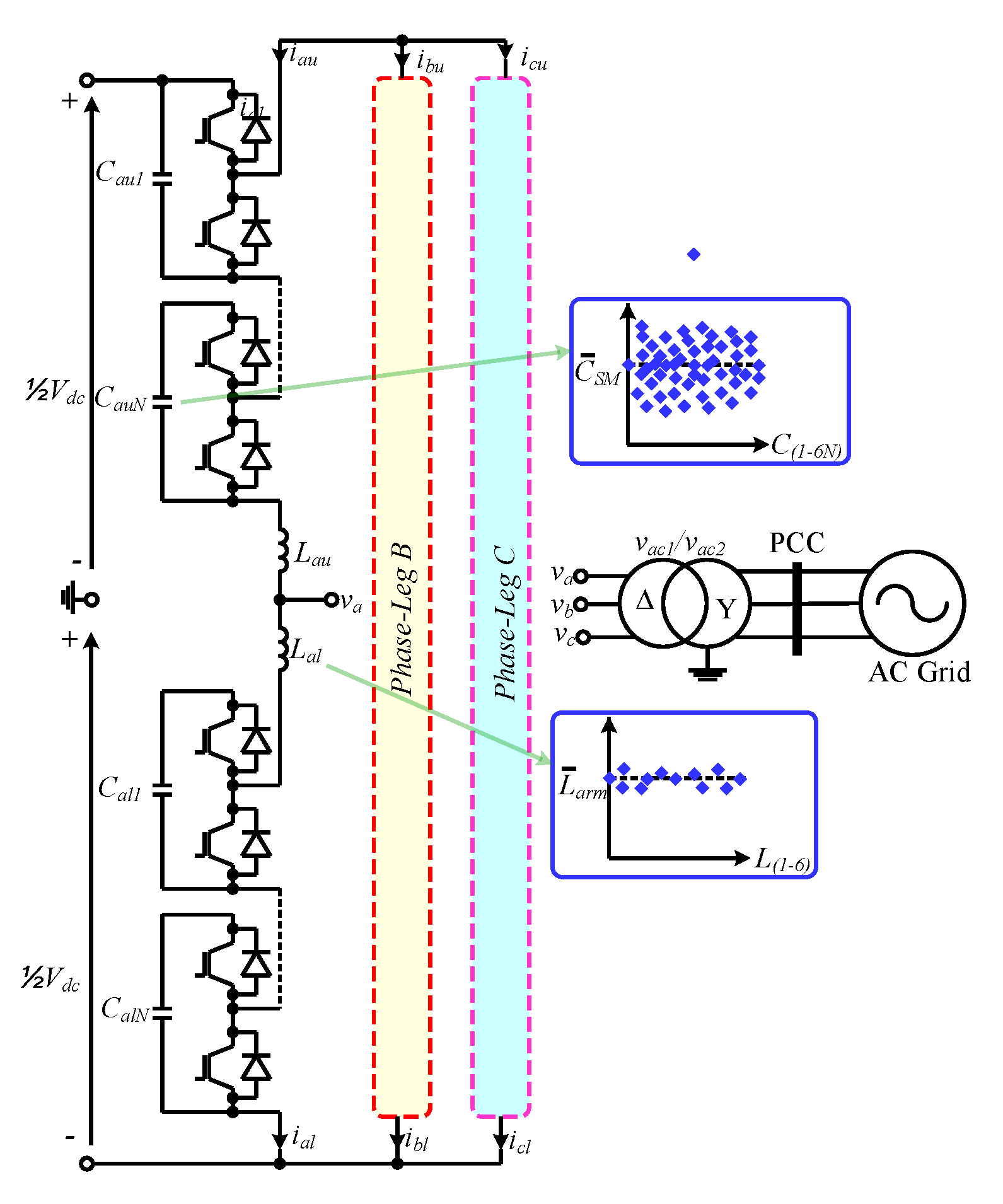
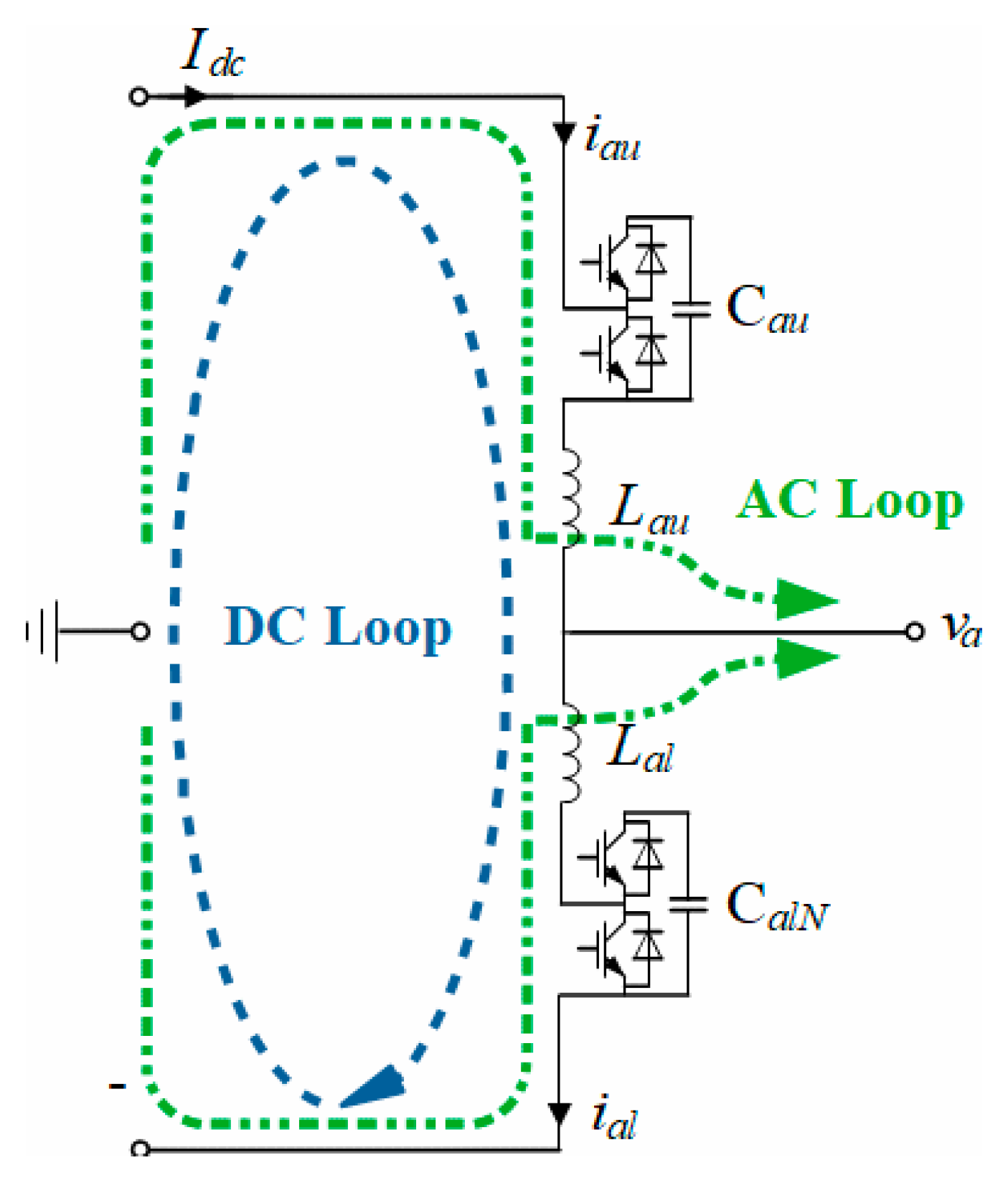

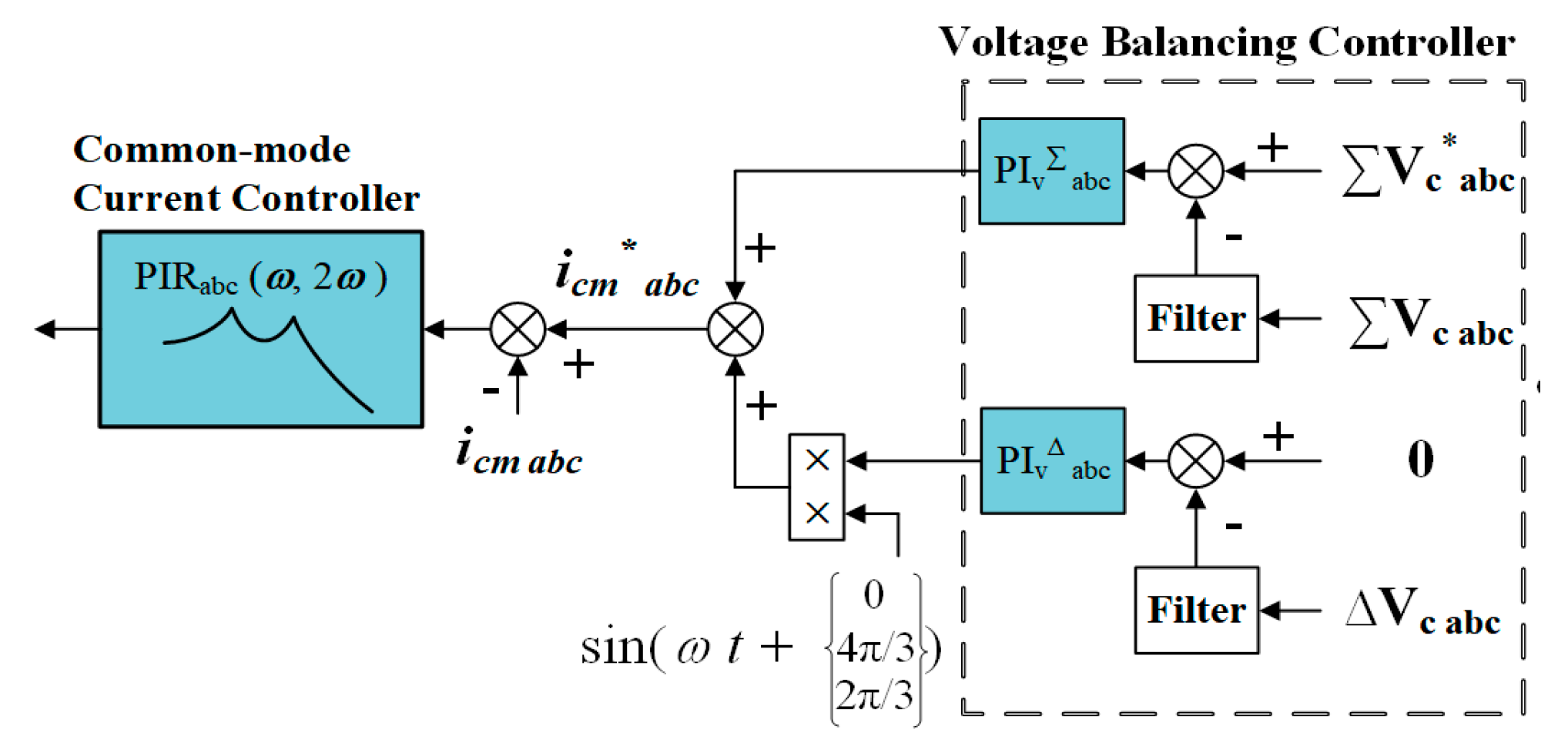
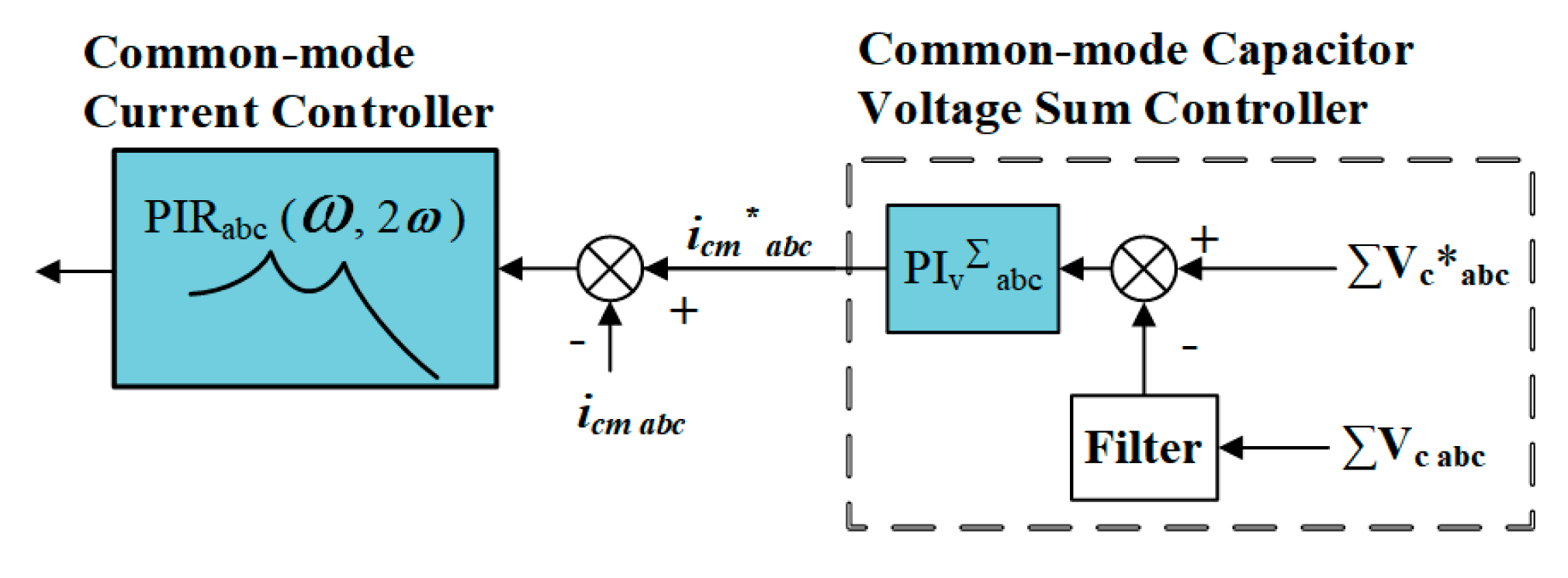
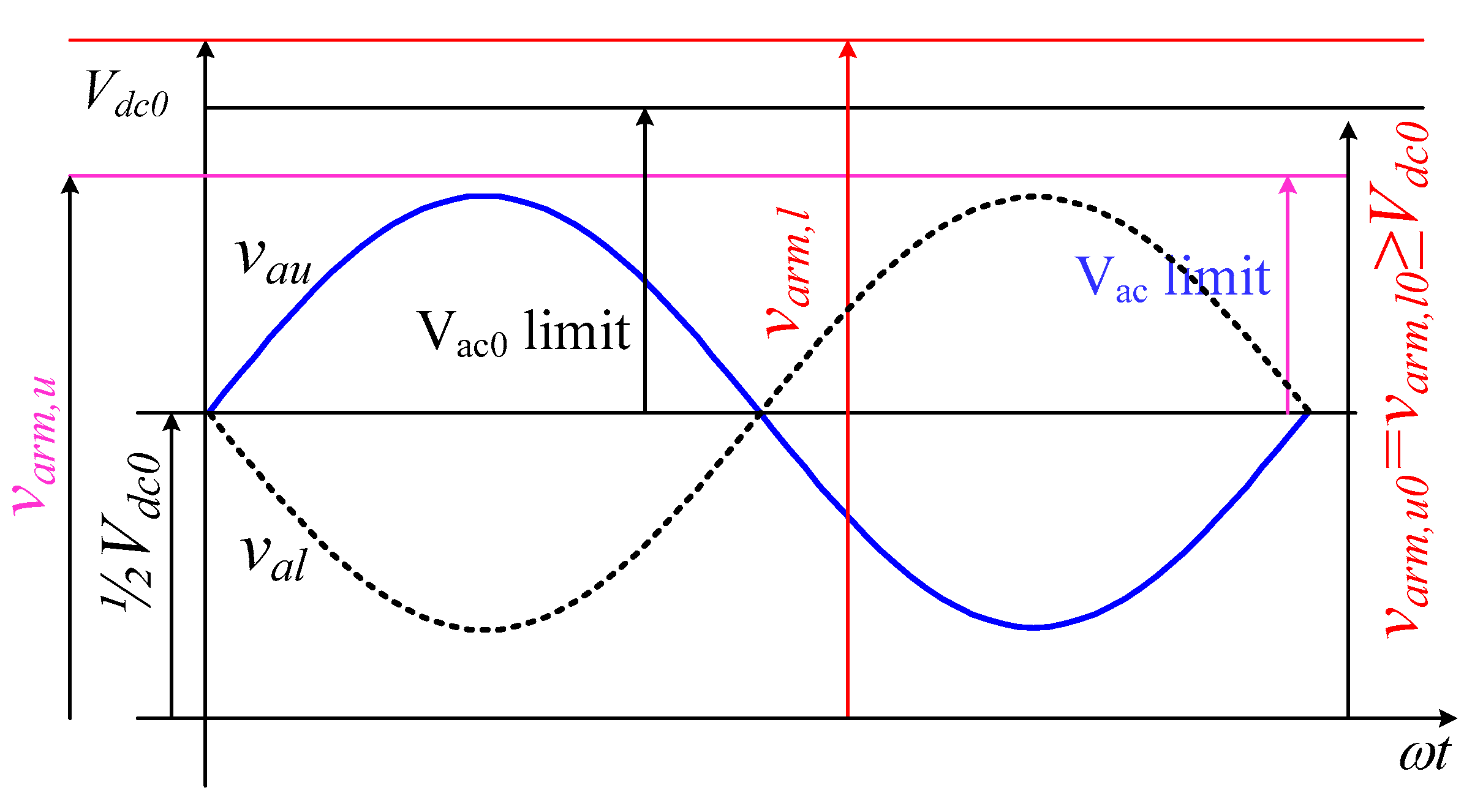

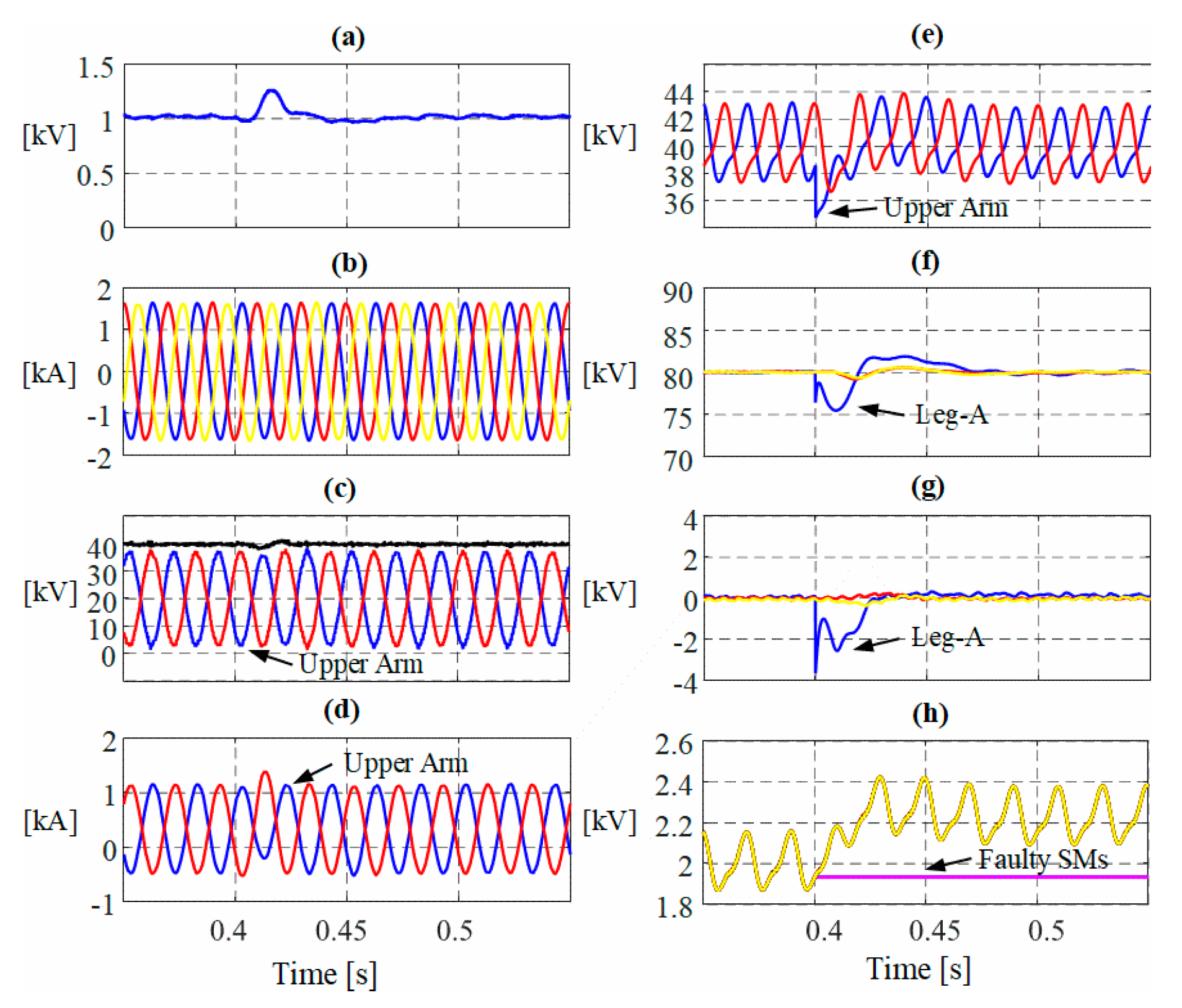

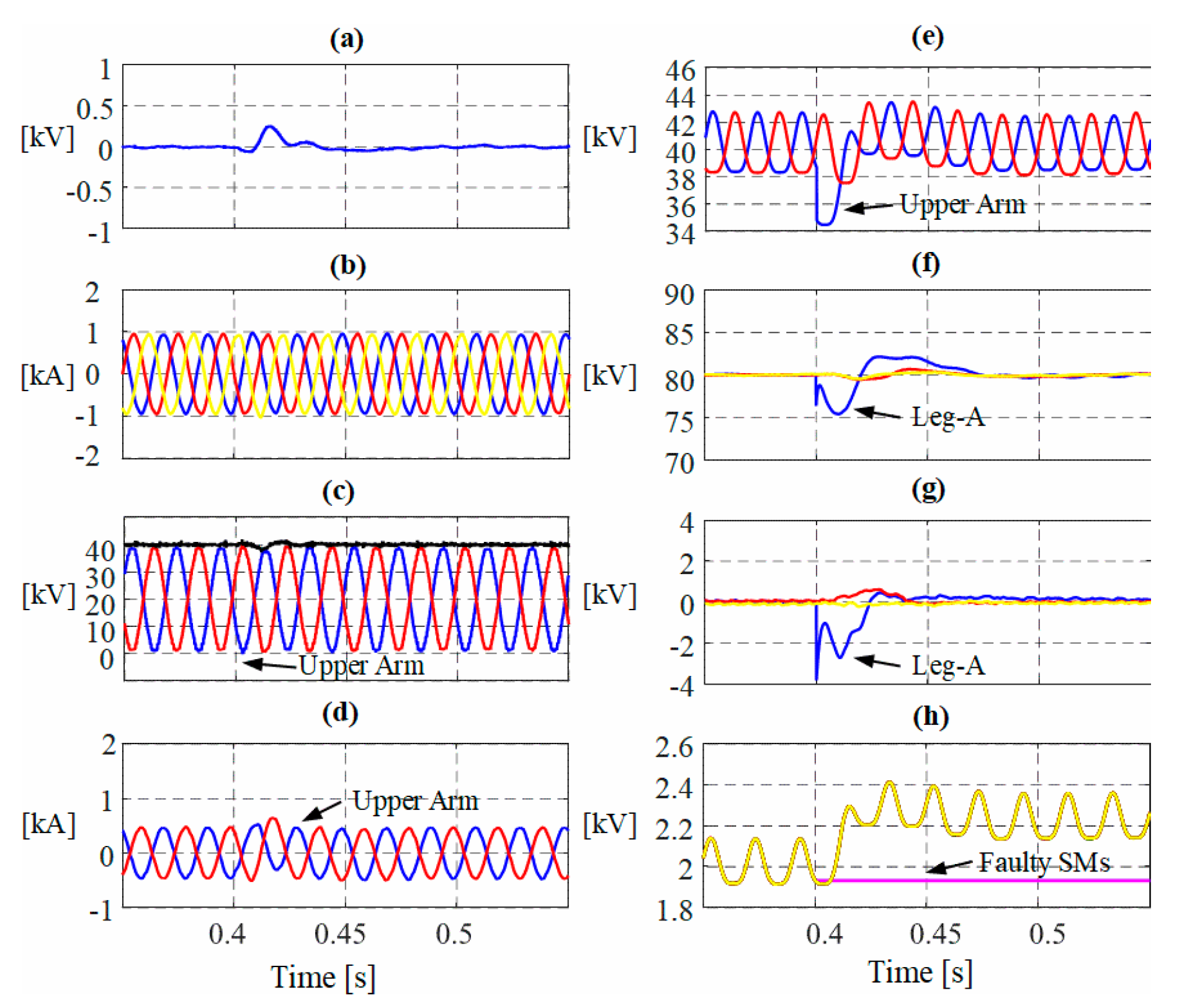
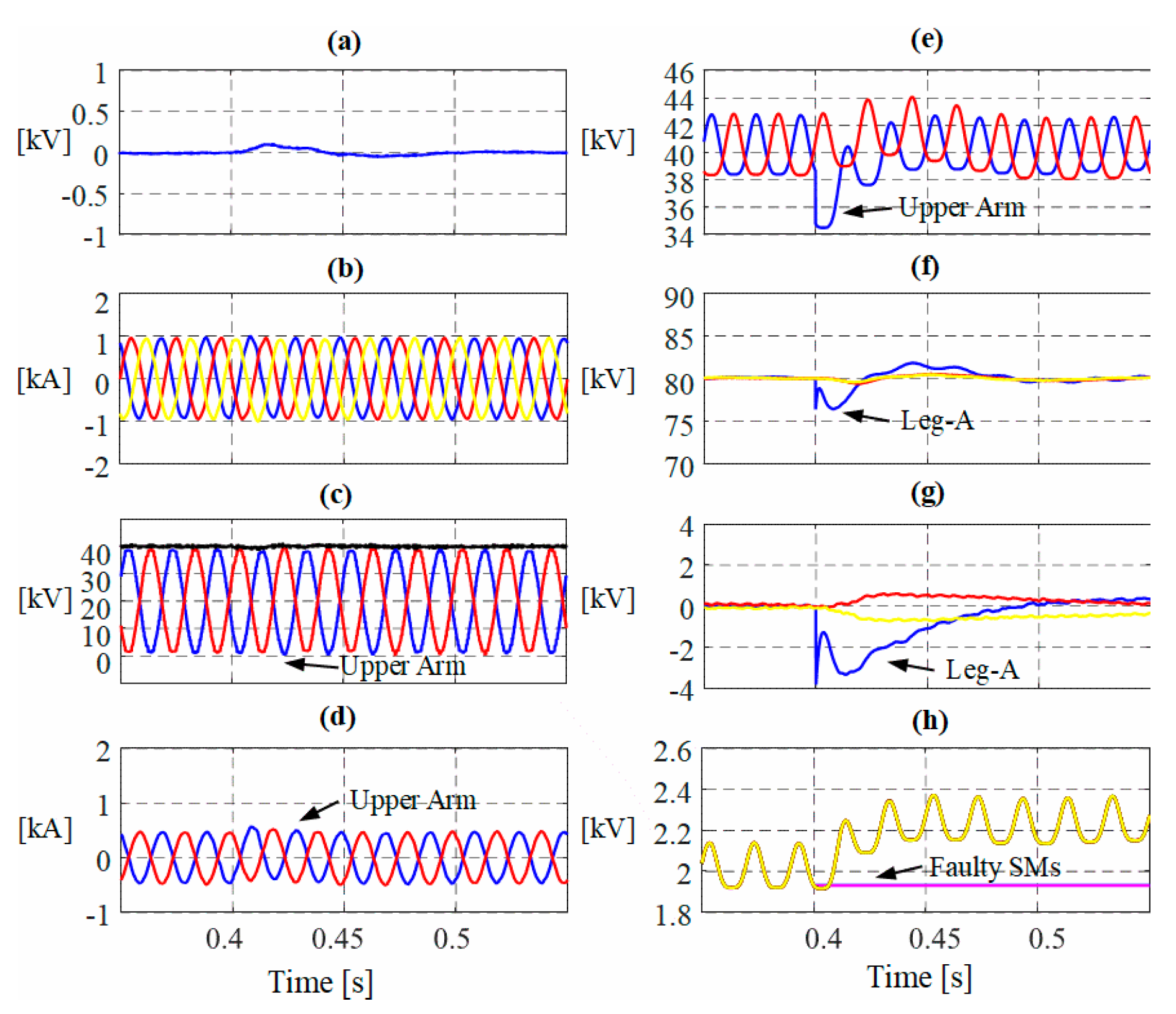
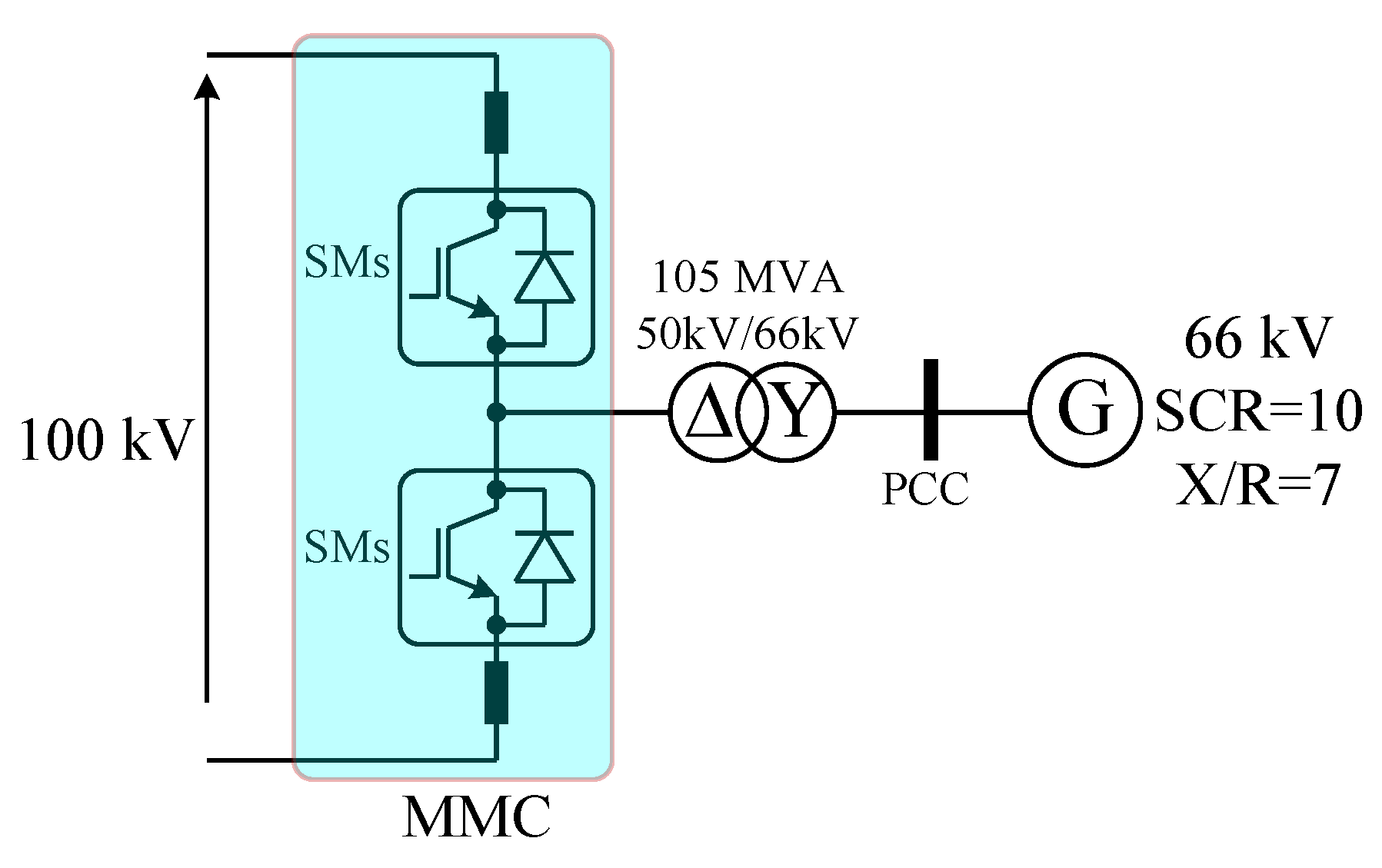
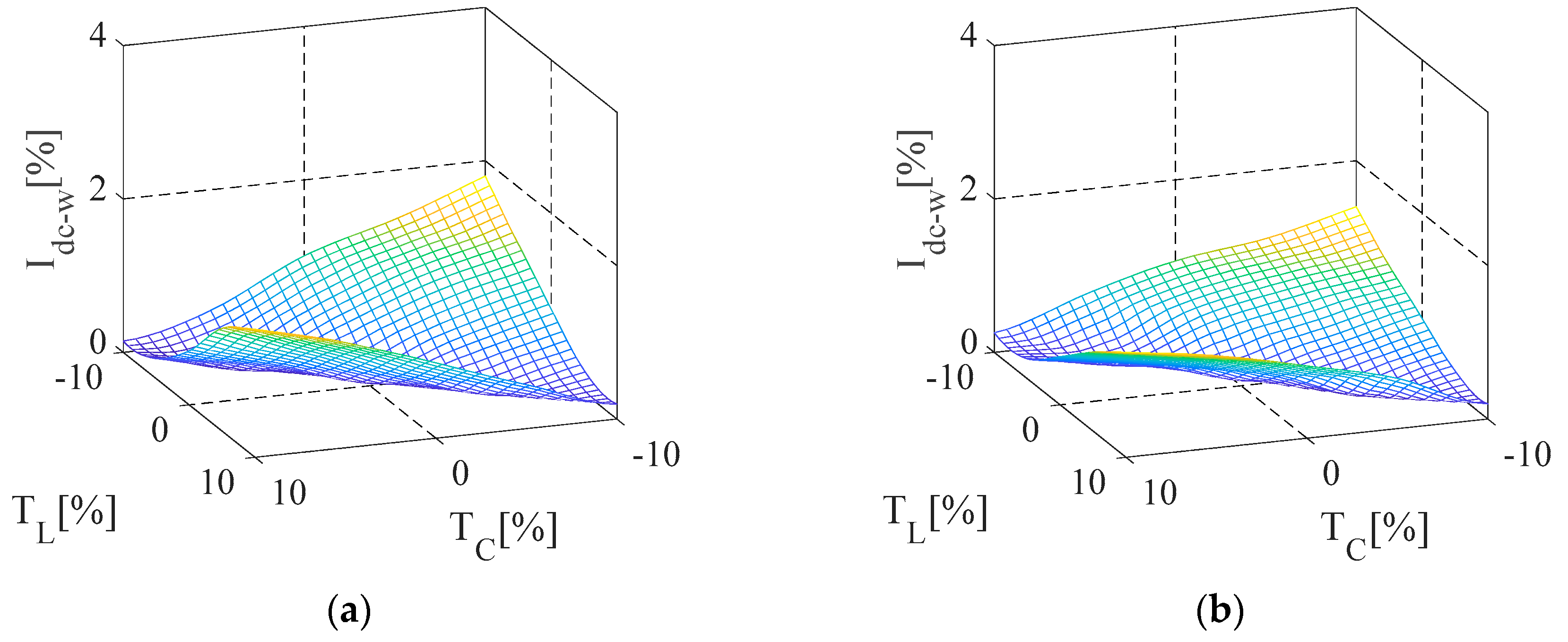
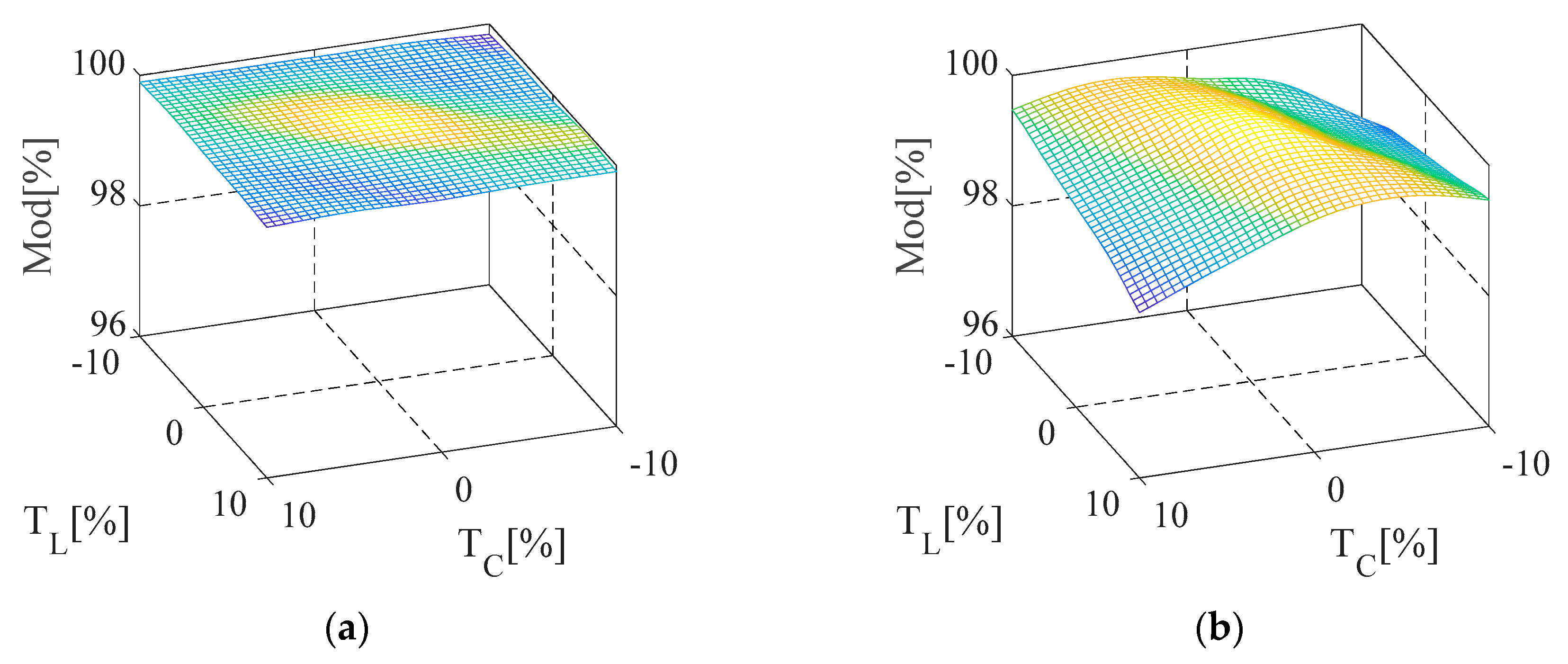
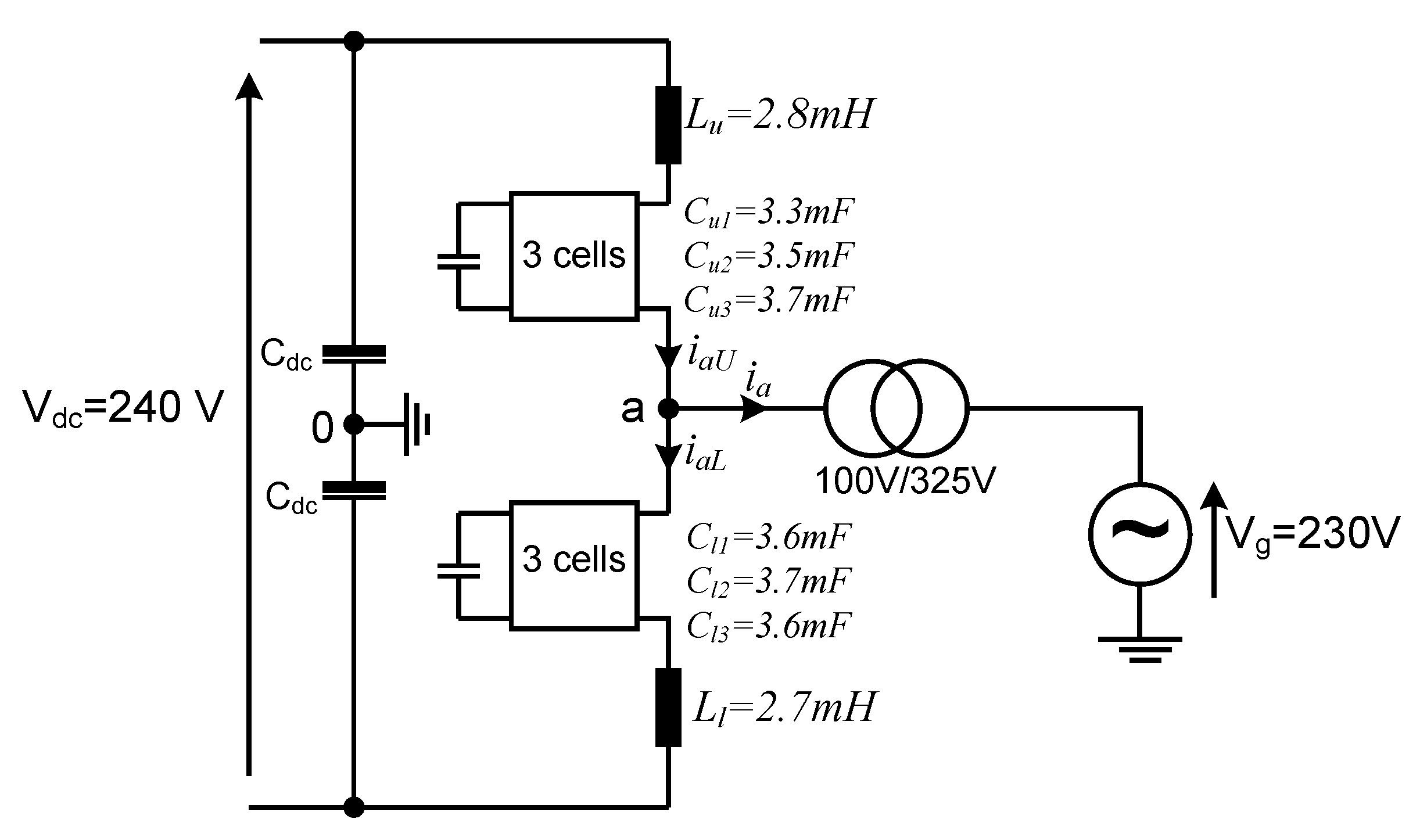
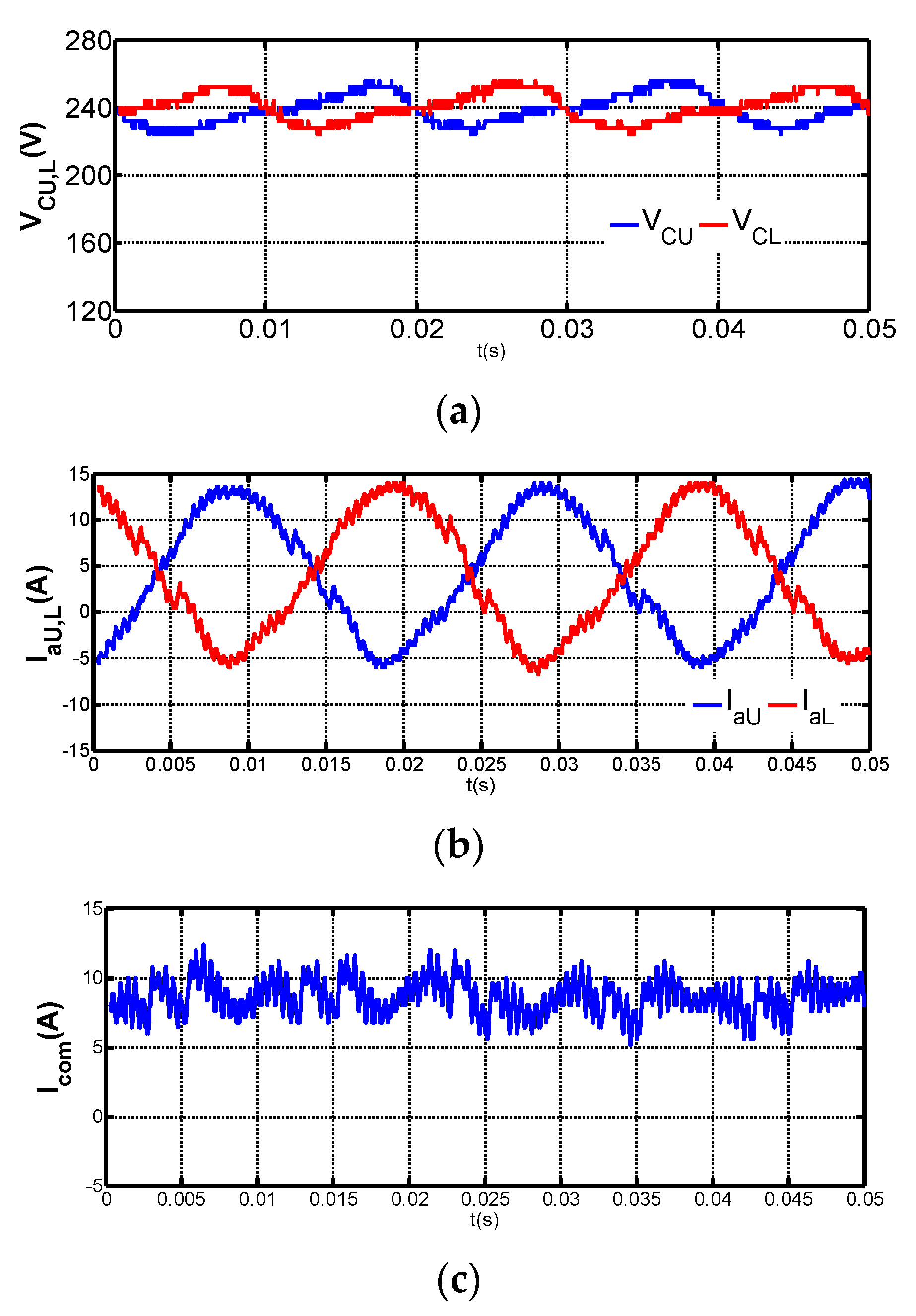
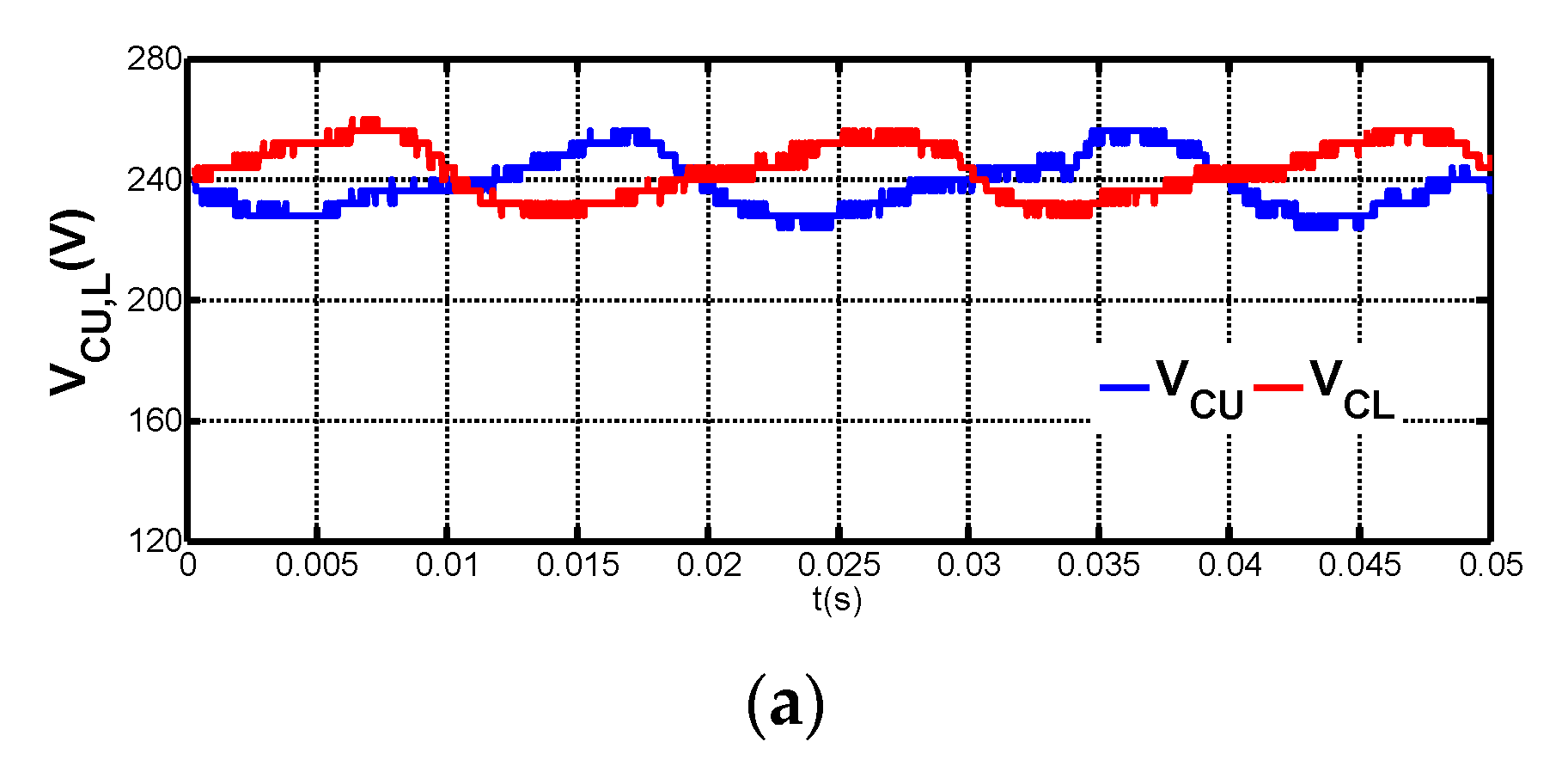
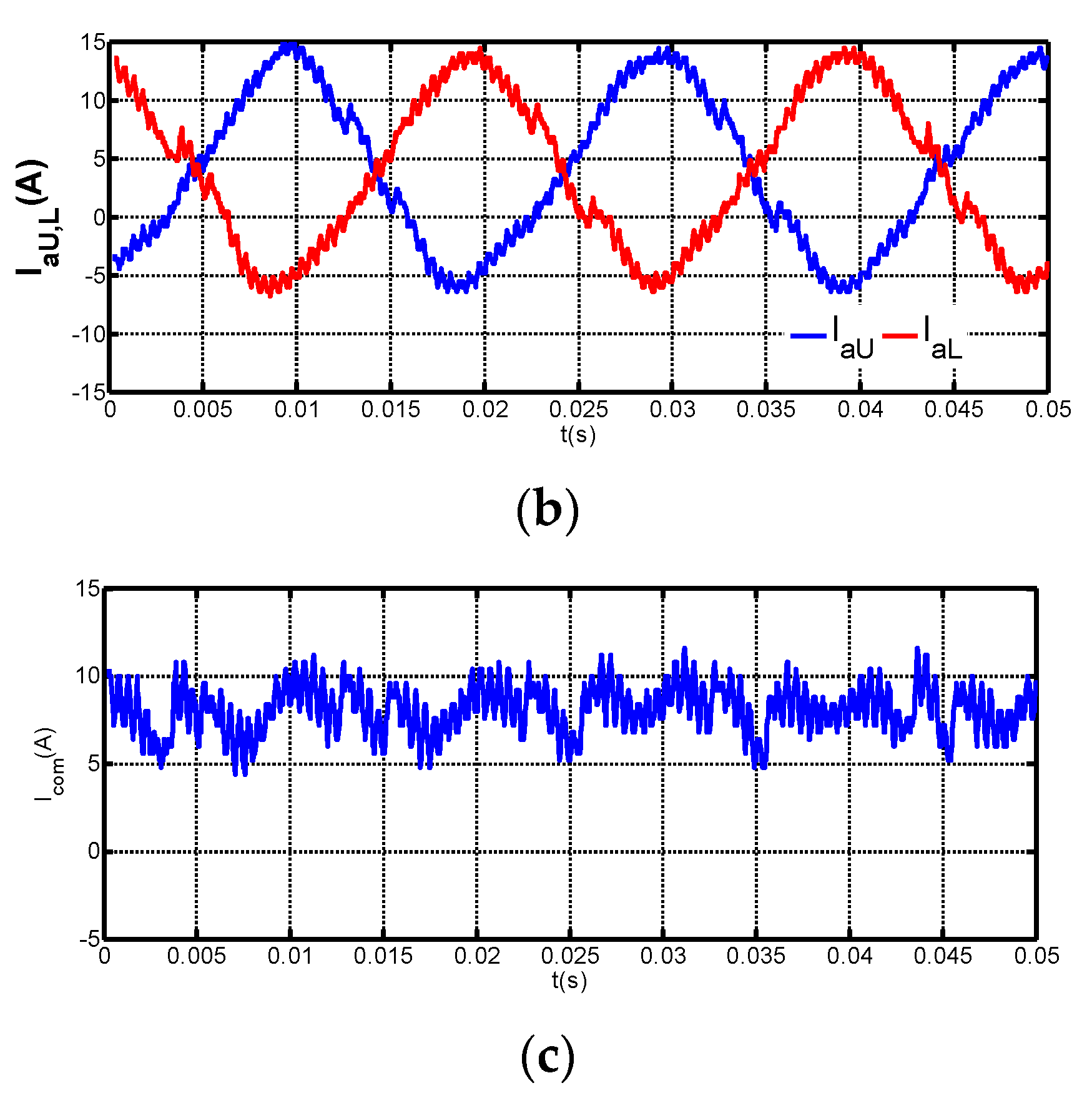
| System Parameters | Value | |
|---|---|---|
| DC voltage Rated power AC grid line to line voltage AC grid frequency Transformer ratio Transformer leakage-inductance Numbers of SMs per arm Expected arm inductance value Expected SM capacitance value DC cable length DC cable resistance per km DC cable inductance per km DC cable capacitance per km | Vdc S vac2 F vac1/vac2 LT N L C Dcable Rcable Lcable Ccable | 40 kV 40 MVA 33 kV 50 Hz 20 kV/33 kV 0.2 pu 20 0.18 pu 6.7 mF 10 km 10 mΩ/km 1.4 mH/km 0.1 μF/km |
| System parameters | Value | |
|---|---|---|
| DC voltage Rated power AC grid line to line voltage AC grid frequency Transformer ratio Transformer leakage-inductance Numbers of SMs per arm Expected arm inductance value Expected SM capacitance value | Vdc S vac2 F vac1/vac2 LT N L C | 100 kV 100 MVA 66 kV 50 Hz 50 kV/66 kV 0.2 pu 50 0.18 pu 6.7 mF |
© 2020 by the authors. Licensee MDPI, Basel, Switzerland. This article is an open access article distributed under the terms and conditions of the Creative Commons Attribution (CC BY) license (http://creativecommons.org/licenses/by/4.0/).
Share and Cite
Wang, S.; Alsokhiry, F.S.; Adam, G.P. Impact of Submodule Faults on the Performance of Modular Multilevel Converters. Energies 2020, 13, 4089. https://doi.org/10.3390/en13164089
Wang S, Alsokhiry FS, Adam GP. Impact of Submodule Faults on the Performance of Modular Multilevel Converters. Energies. 2020; 13(16):4089. https://doi.org/10.3390/en13164089
Chicago/Turabian StyleWang, Shuren, Fahad Saeed Alsokhiry, and Grain Philip Adam. 2020. "Impact of Submodule Faults on the Performance of Modular Multilevel Converters" Energies 13, no. 16: 4089. https://doi.org/10.3390/en13164089
APA StyleWang, S., Alsokhiry, F. S., & Adam, G. P. (2020). Impact of Submodule Faults on the Performance of Modular Multilevel Converters. Energies, 13(16), 4089. https://doi.org/10.3390/en13164089





